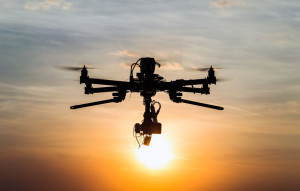Protecting your business starts with a plan. But “protecting your business from risk” can also seem vague. Where do you start? Every business will be different, but here are some steps to take to get you  started.
started.
- Identify risks: A risk is a potential problem that could damage your business. This includes cybersecurity threats, employee workplace hazards, and even damage to your physical space that could disrupt the operation of your business and hurt your finances and business reputation. Consider all the ways your business could suffer when starting your risk assessment.
- Create a risk document: After identifying, it’s important to document. This includes estimating how much each potential risk could cost your business – in anything from money to downtime to industry reputation. Rank your risks from mild to severe – this will help your risk mitigation plan and give you and your business a list of priorities.
- Make your prevention plan: Each risk has been established – now what? Begin research for how best to prevent them. Is your workspace laid out in a way that would allow for easy evacuation? Do you have regular emergency drills? Have you updated your operational security software to gate access to both your building and your software systems? Asking these kinds of questions help you identify gaps in your risk management plan.
- Review: Always go back and look at your risk plan. Have certain things become higher or lower risks, based on new location, new software, or new employee policies? Have your mitigation efforts helped reduce or eliminate incidents, or are you still seeing problems in certain areas? If negative patterns continue, it’s probably time to revisit your prevention plan and see if other strategies could be more successful.
Our business is helping your business be prepared and protect itself if the worst should happen. Even minor problems can become major risks if they’re not addressed. Working with us means having a partner who cares about your unique business needs and wants to ensure a positive and successful future for you and your company. Make sure you have all the protection you need. Call us today to discuss insurance, risk management plans, and other key business protection points.

 On any given day when looking into the sky, you are more likely to see a drone than ever before. Both affordable and accessible, drones are a relatively new technology but are gaining in popularity for recreational as well as commercial use. As drone use increases and the technology improves, insurance companies are finding innovative ways to use drones in handling claims.
On any given day when looking into the sky, you are more likely to see a drone than ever before. Both affordable and accessible, drones are a relatively new technology but are gaining in popularity for recreational as well as commercial use. As drone use increases and the technology improves, insurance companies are finding innovative ways to use drones in handling claims.